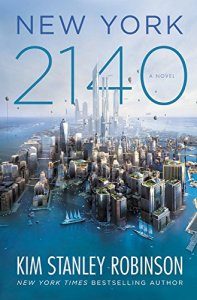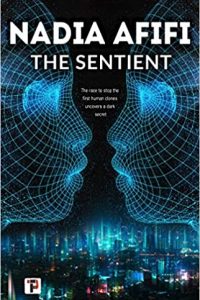Gary K. Wolfe Reviews The Cartographers by Peng Shepherd
 The Cartographers, Peng Shepherd (William Morrow 978-0062910691, $27.99, 400pp, hc) March 2022.
The Cartographers, Peng Shepherd (William Morrow 978-0062910691, $27.99, 400pp, hc) March 2022.
Speaking of maps, thanks largely to Tolkien they’re all but inescapable in modern secondary-world fantasy, but fantasies about maps are much less common. With her second novel The Cartographers, Peng Shepherd sets out to correct that, focusing in part on the actual practice by early commercial mapmakers of inserting fake ‘‘phantom settlements’’ in their maps as copyright traps to catch would-be plagiarists. The novel begins, though, as a kind of institutional thriller, that odd but intriguing subgenre of suspense novels which are set mostly in libraries, museums, laboratories, or colleges–all of which are terrific places for hiding world-threatening secrets or dangerous documents–and which in its most sensational form tosses up Dan Brown novels or Nicholas Cage movies. In Shepherd’s case, that setting is the cartography division of the New York Public Library. Nell Young is a newly minted Ph.D. intern and the heir apparent to her father’s legendary career in the library’s conservation department. Hoping to impress her father and other senior scholars, she discovers an uncatalogued box of maps in the library’s basement storerooms, including an apparently worthless folded gas-station highway map from 1930. Instead of being impressed, though, her father has both Nell and her boyfriend Felix inexplicably and summarily fired, and virtually blackballed from the world of professional cartography.
Now, seven years later, after having refused any communication with her father all that time, Nell learns that her father has died under mysterious circumstances – and in a secret compartment in his desk, she finds that same highway map. Curiosity aroused, she tries a database search for other copies of the map, only to learn that they’ve all been lost or stolen from the few archives that held them. Felix, now working for a humongous virtual mapping corporation called Haberson – which ‘‘made companies like Amazon and Google look small’’ (one of Shepherd’s less subtle red flags) – also learns that ridiculous amounts of money have been offered for copies, and that a shadowy group called The Cartographers may be behind it. More mysterious crimes follow – break-ins at the NYPL by an apparent phantom intruder, even another murder – and Nell’s dogged investigation leads all the way back to her parents’ days as doctoral students in Wisconsin, where with a group of fellow graduate students they planned a massive ‘‘Dreamer’s Atlas,’’ combining fantasy literature maps with historical documents – a project which fell apart when Nell’s mom died in a fire.
For more than half the novel, as Nell tries to discover why that map is so sought after, the narrative opens up in ways that could resolve into fantasy, magical realism, or simply an overplotted thriller. Gradually, though, the tale begins to fold in on itself, with characters revealing both hidden identities and hidden agendas – sometimes in dropped-in first-person chapters which, though supposedly told to Nell, all sound like pretty much the same voice, and which aren’t remotely convincing as dialogue. Fortunately, Nell herself is an engaging figure whose dogged intelligence powers most of the story, even as her on-again-off-again romance with Felix sometimes feels more like a distraction than an important plot point. Despite an occasional bromide like ‘‘It was not a map alone that made a place real. It was the people,’’ Shepherd’s style is briskly efficient and readable, and she knows how to bring off a chapter-ending cliffhanger. More important, though, is how The Cartographers explores and exploits the hypnotic sense of wonder of mapmaking itself, and how – in more than a merely metaphorical sense – our representations of the world can become the world itself. All in all, it’s a lot of fun, and at its best reads like a Borgesian conceit transformed into a conspiratorial thriller.
Gary K. Wolfe is Emeritus Professor of Humanities at Roosevelt University and a reviewer for Locus magazine since 1991. His reviews have been collected in Soundings (BSFA Award 2006; Hugo nominee), Bearings (Hugo nominee 2011), and Sightings (2011), and his Evaporating Genres: Essays on Fantastic Literature (Wesleyan) received the Locus Award in 2012. Earlier books include The Known and the Unknown: The Iconography of Science Fiction (Eaton Award, 1981), Harlan Ellison: The Edge of Forever (with Ellen Weil, 2002), and David Lindsay (1982). For the Library of America, he edited American Science Fiction: Nine Classic Novels of the 1950s in 2012, with a similar set for the 1960s forthcoming. He has received the Pilgrim Award from the Science Fiction Research Association, the Distinguished Scholarship Award from the International Association for the Fantastic in the Arts, and a Special World Fantasy Award for criticism. His 24-lecture series How Great Science Fiction Works appeared from The Great Courses in 2016. He has received six Hugo nominations, two for his reviews collections and four for The Coode Street Podcast, which he has co-hosted with Jonathan Strahan for more than 300 episodes. He lives in Chicago.
This review and more like it in the March 2022 issue of Locus.
 While you are here, please take a moment to support Locus with a one-time or recurring donation. We rely on reader donations to keep the magazine and site going, and would like to keep the site paywall free, but WE NEED YOUR FINANCIAL SUPPORT to continue quality coverage of the science fiction and fantasy field.
While you are here, please take a moment to support Locus with a one-time or recurring donation. We rely on reader donations to keep the magazine and site going, and would like to keep the site paywall free, but WE NEED YOUR FINANCIAL SUPPORT to continue quality coverage of the science fiction and fantasy field.
©Locus Magazine. Copyrighted material may not be republished without permission of LSFF.








